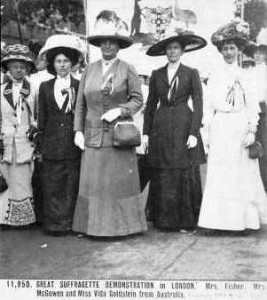-
If expressive change or The Giving Field was the first big ah-ha for us, the second was something we might call “the experiential turn.” If we want to create a social change dynamic rooted in the actual lived experiences of the people who make up our organizations, it makes sense that, no matter what specific practices we adopt, we should pay a great deal of sustained attention to those experiences.
For example, suppose an organization has a deep commitment to “participation” as a social and organizational goal. The organization might develop any number of forms that mean participation to it. Perhaps during a meeting people are very conscious about going around the room to make sure that each person has a chance to speak. The organization can then congratulate itself on being “participatory.” An experiential approach, while it will certainly make use of forms like “going around the room,” will shift the focus to people’s actual experiences of participation. Those experiences might not match the forms. Perhaps Molly feels that she has not really been listened to. If we concentrate on forms, and if Molly has had her chance to speak, then we can simply end the matter by reminding Molly that she has participated fully and equally. But if we concentrate on experiences, we will take Molly’s concern seriously. We will inquire into it. Why doesn’t she feel listened to? What do we need to shift so that she feels she has really participated. We might look at anything from external forms and structures to our internal thought patterns. And there may be no easy or obvious answers (particularly if Molly’s experiences seem to conflict with other people’s experiences), but we will continue to explore possibilities.
This is not simply an abstract, philosophical distinction. The most engaging organizations I know privilege the way that people live them over any particular forms, symbols, or ideologies. And over time this privileging seems to lead to a deeply expressive coherence between mission and experience.
I think it is easy to confuse a more superficial coherence between an organization’s visible structures and its mission for this deeper coherence. There is certainly some sort of alignment, say, when an environmental organization installs energy-efficient lightbulbs, when a school requires that teachers take continuing education classes of their own, or when a hospital provides check-ups for its physicians, but these superficial conformities do not necessarily translate into the deeper experience of ecological reverence, passionate learning, or wellness.
In her book Freedom is an Endless Meeting, Francesca Polletta illustrates this distinction between form and experience when she talks about the feminist movement. She says that among social movement organizations, feminist groups were almost unique in how fervently they committed to developing new organizational forms in line with their broad social principles. They experimented with ways to flatten hierarchies and create richly democratic decision-making structures:
“Yet such advances were hard won. When former activists talk about their lives in the movement, pride mingles with hurt, nostalgia with bitterness. Activists remember the joy of new found political agency and solidarity with women too long viewed as competitors, but they also remember being denounced by fellow activists for exercising initiative or leadership and being ‘trashed’ for trying to take a feminist message to the wider public. With some puzzlement they described what had seemed a worthy anti-authoritarianism coming to require a leveling of all talents and what had seemed an admirable collectivism producing a censoriousness that discouraged anyone voicing a dissenting opinion. They described feminist collectives imploding in anger and mutual recriminations that left some members traumatized for years.”
I think we are often baffled by how recalcitrant our experiences are and how easily they shift and change even when our forms of interaction seem consistent. An organizational structure or meeting process that once helped us to feel community now stands in our way. But we forget that those structures and processes are merely aides, pointers, symbols. They are not the thing itself. In future blog posts we hope to explore some of the ways that organizations can begin to reinvest themselves in and pay attention to experience rather than just to form, and we’d also love to hear about any examples of this shift that you have seen.
The experiential turn





3 Responses and Counting...
Thank you Rennie for this. I came here because Tana referred me to it. Hmmm. Experience vs form. I see the sense in focusing on experience instead of just form in the same way that the heart of a human being is the real deal, and not just what is apparent. Experience or heart is more difficult to discern or to apprehend when you have to deal with lots of pressures and there is a need to be “efficient”. I think a willingness to be present and to value each other as complete humans beings whose thoughts, feelings, opinions, disagreements, convictions matter helps to pay attention to experiences.
It is much more efficient to focus on form and just assume we are on the right track when we perceive our tasks as mere tasks rather than experiences to be lived through by all involved, with all of us involved, because, right now this relationship, this interaction is all that matters. It is challenging, I think, when the rubber meets the road, especially in a for-profit setting because there is a tendency to think we will “fail” if we did business as if people mattered. But I agree with Tana’s response to my comment on Inscaping – having the intention is a good place to start. I am convinced there is an intelligence separate and other from each and all of us that recognizes and assists in transforming our intentions into practice or reality.
Hi Rennie!
Wonderful to see your and Tana’s thoughts up and out into the world. I love it all!
This post reminds me of the challenge of shifting from a mechanistic worldview to an organic one. In the first view, we are defined by what we accomplish. The task is our sole purpose for being, and all tasks boil down to competing and consuming. In the second view, we are defined by what we become. And our best means of becoming is through compassion and connection. I love that you’re championing this second, saner and more sustainable, view.
[…] in their organizations in order to be more resilient? My first reaction is to return to the Form vs. Experience ideas presented at Campus Compass by Jonathan Glencross, originally developed by Warren Nilsson and […]